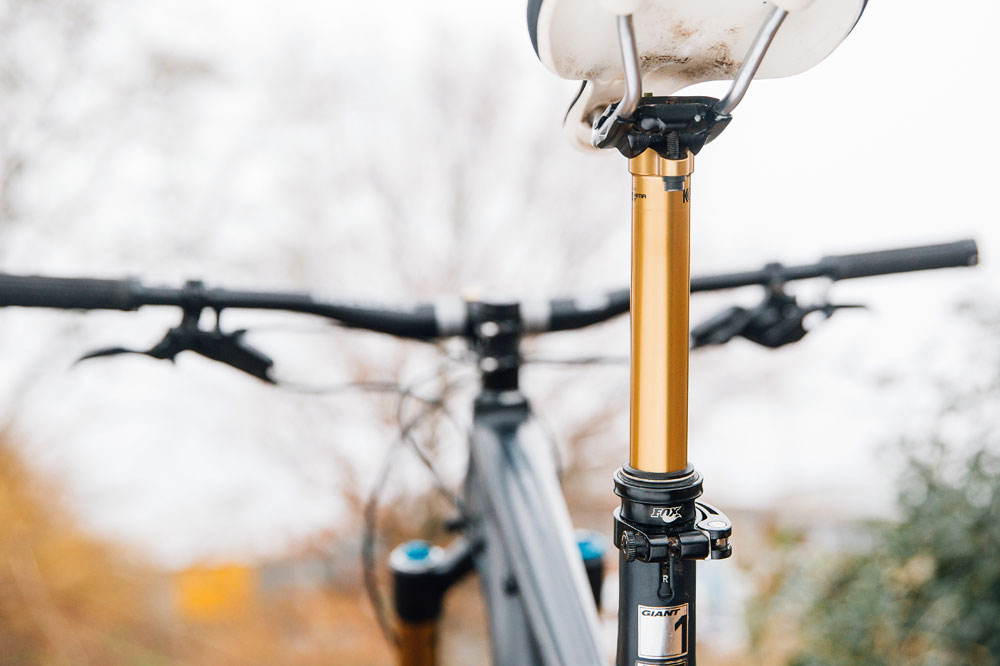If you were lucky enough to get a new bike during the lockdown bike boom, here are some ideas to make you ride even better.
Five upgrades that’ll really make your new bike sing. In priority order…
Read more: Best mountain bike wheels in 2021, aluminium and carbon options
‘View Deal’ links
You will notice that beneath each product summary is a ‘View Deal’ link. If you click on one of these links then mbr may receive a small amount of money from the retailer should you go to purchase the product from them. Don’t worry, this does not affect the amount you pay.

1. Kevlar bead tyres
Tyres are your only point of contact for cornering, stopping and accelerating so get the best you can afford. Go for Kevlar bead tyres, they’re much lighter than the steel beaded ones on cheaper bikes, and the reduction in weight can make a world of difference to your momentum and acceleration.
As a general rule of thumb, get something between 2.1in and 2.6in wide – you want a softer rubber compound with taller knobs for the front and a less aggressive looking model for the rear to roll fast. There are plenty of great brands out there making good tyres now, but our longstanding favourite is Maxxis — the Minion DHF on the front and High Roller II behind is a great all round combination. Finally, ditch the inner tubes and set up tubeless instead to further reduce weight and the chance of punctures.

2. Grippy pedals
The most important grip point to keep you on the bike isn’t in fact your hands (which we’ll get to in a minute), but your feet. Most of your weight goes through them, and it’s that weight that ultimately generates grip for your bike’s tyres. We reckon you’re best off getting started on flat pedals, they teach you how to push your bike into the ground to generate grip.
The best pedals have a large platform that’s slightly concave to cradle your foot. It’s ideal if that platform is thin to keep your weight low, and go for pedals with sealed axle bearings for longevity. You don’t need titanium (unless you can afford it), aluminium works great for strength and durability, and nylon is nearly as good and way cheaper. Our favourite is the Nukeproof Horizon Sam Hill Enduro pedal, for its great shape, feel and durability. A cheaper option is the HT PA03A nylon pedal.

3. Soft grips
Your hands form the only other contact point between you and the bike when descending (you’ll be stood up for perfect form, of course). They need to be cossetted from the trail with decent grips then, grips that damp vibration and preventing chaffing or soreness, letting you ride comfortably and for longer. The flip side is that they also need to be grippy and remain so when wet, muddy or sweaty.
Unfortunately, plenty of new bikes come with rock-hard grips that offer neither good comfort nor decent grip, so swap them out as soon as possible. Grips come in different lengths and diameters, some are fatter in different parts of the hand, and there are countless grip patterns, shapes and rubber durometers to choose from. The good news is that grips are cheap so you can experiment to find the right one for you, we recommend the lock-on ones so you can change them easily.

4. Dropper post
You want your saddle high for optimum power when climbing, and low for maximum range of movement when descending. That means changing the height of it for different parts of your ride, for which you’ll have to stop and open the quick release. This quickly becomes tedious and interrupts the flow of your ride. Fortunately, dropper posts were invented a decade back to let you automatically drop or raise your saddle height via a lever on your bar.
RockShox makes a post called the Reverb with a hydraulically actuated remote lever and hose: all the rest use a regular gear cable to connect the post to the lever. Both are good options.
Dropper posts come in varying lengths of drop, from 125mm right up to 200mm — taller riders will need more drop, shorter riders can get away with less. Make sure the post can fit into your frame, check the length of the lower part of the post before buying and compare it to the depth of your seat tube. And beware buying an internally routed post, one where the hose or cable travels inside your frame – you need a frame with the correct entry and exit ports for it.

5. Comfy saddle
If you’re not used to riding then pretty much any saddle will feel like you’re sitting on an iron after a while. It does get easier though as you toughen up a little. That said, some saddles are comfier than others, and it’s important to get the right fit for comfort in the long term as you’ll spend some 90% of your ride perched on it.
There is no ‘one size fits all’ for saddles, one person’s cushion is another’s church pew. But the best saddles have plenty in common: Look out for a snub nose to reduce the danger of catching your shorts, firm padding rather than inches of squishy foam, and a flexy base for extra give. Modern saddles are shorter and wider too, letting you move around more and not get in the way. Plenty also come in different widths to tailor to your fit bones, something you can measure at home.




